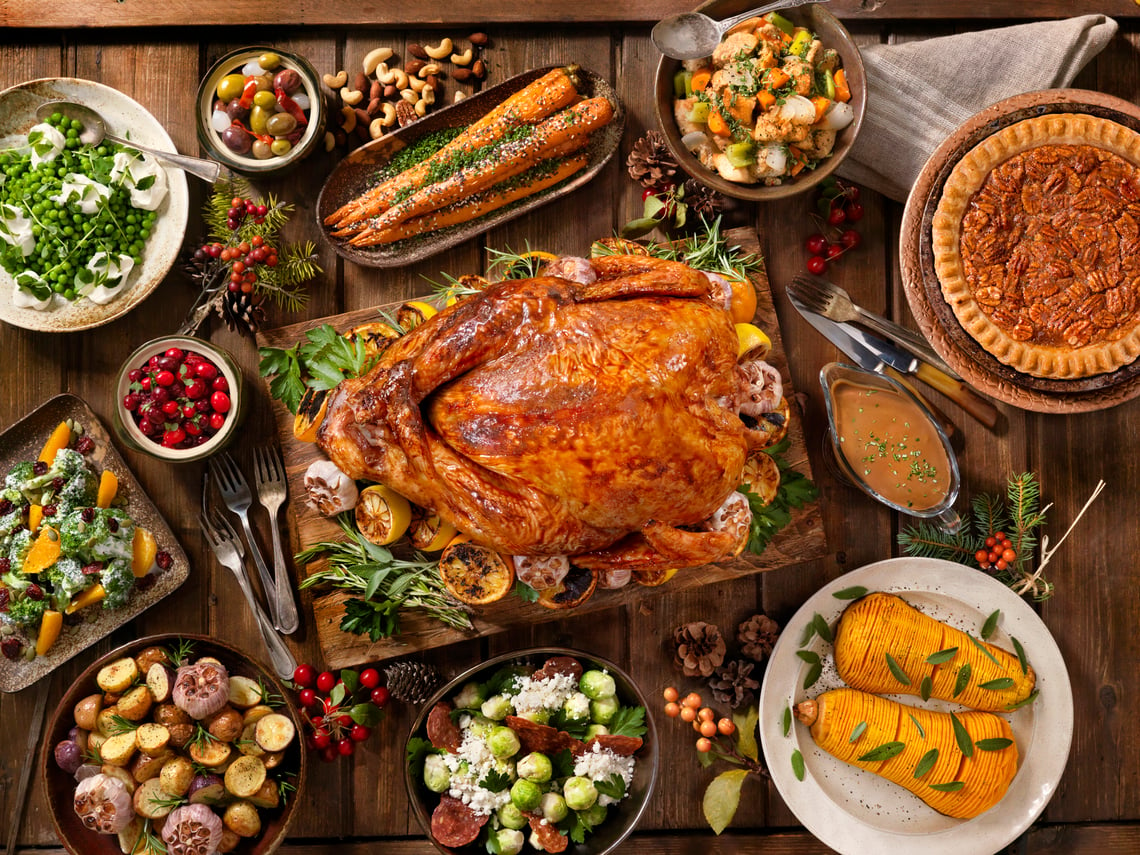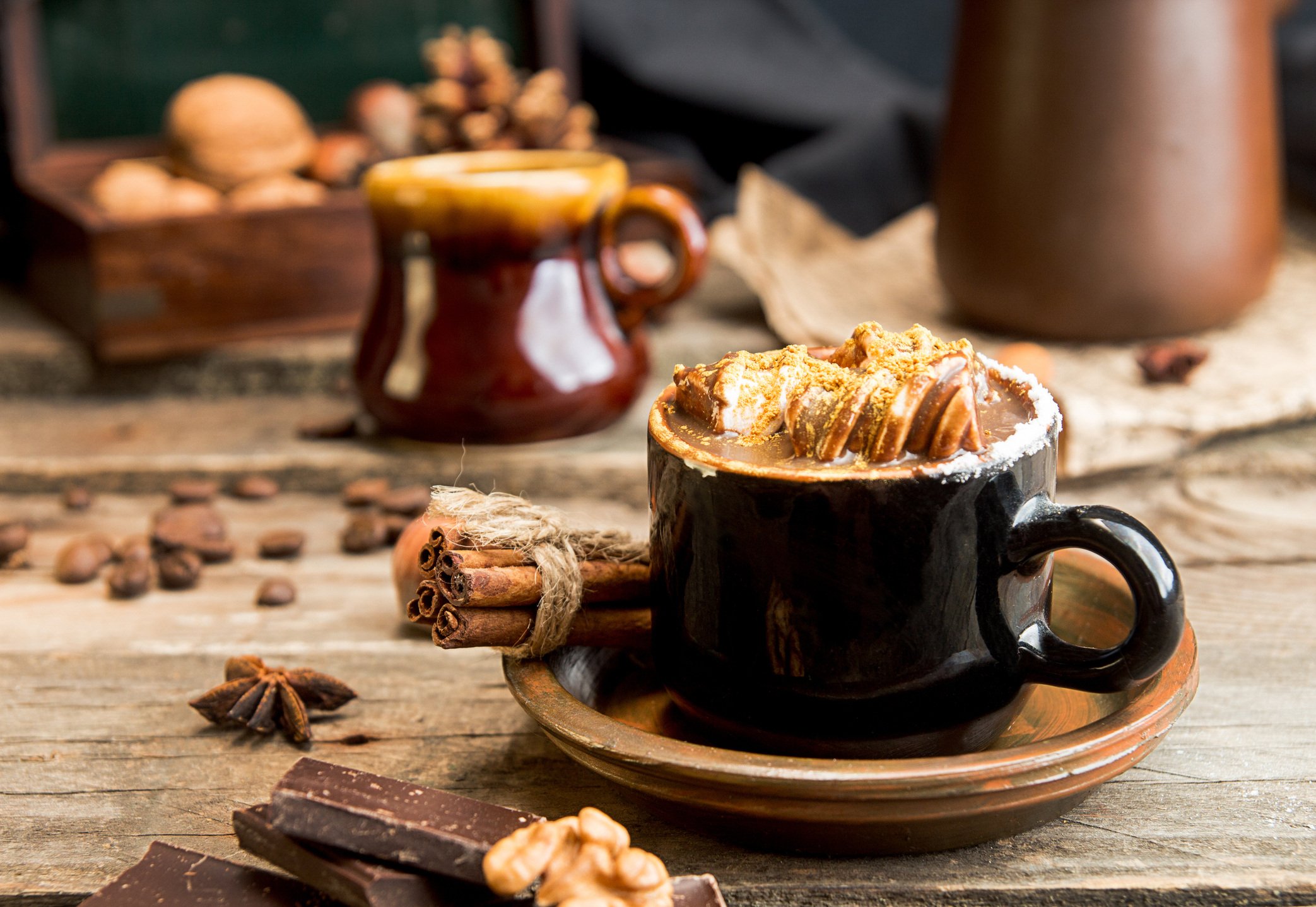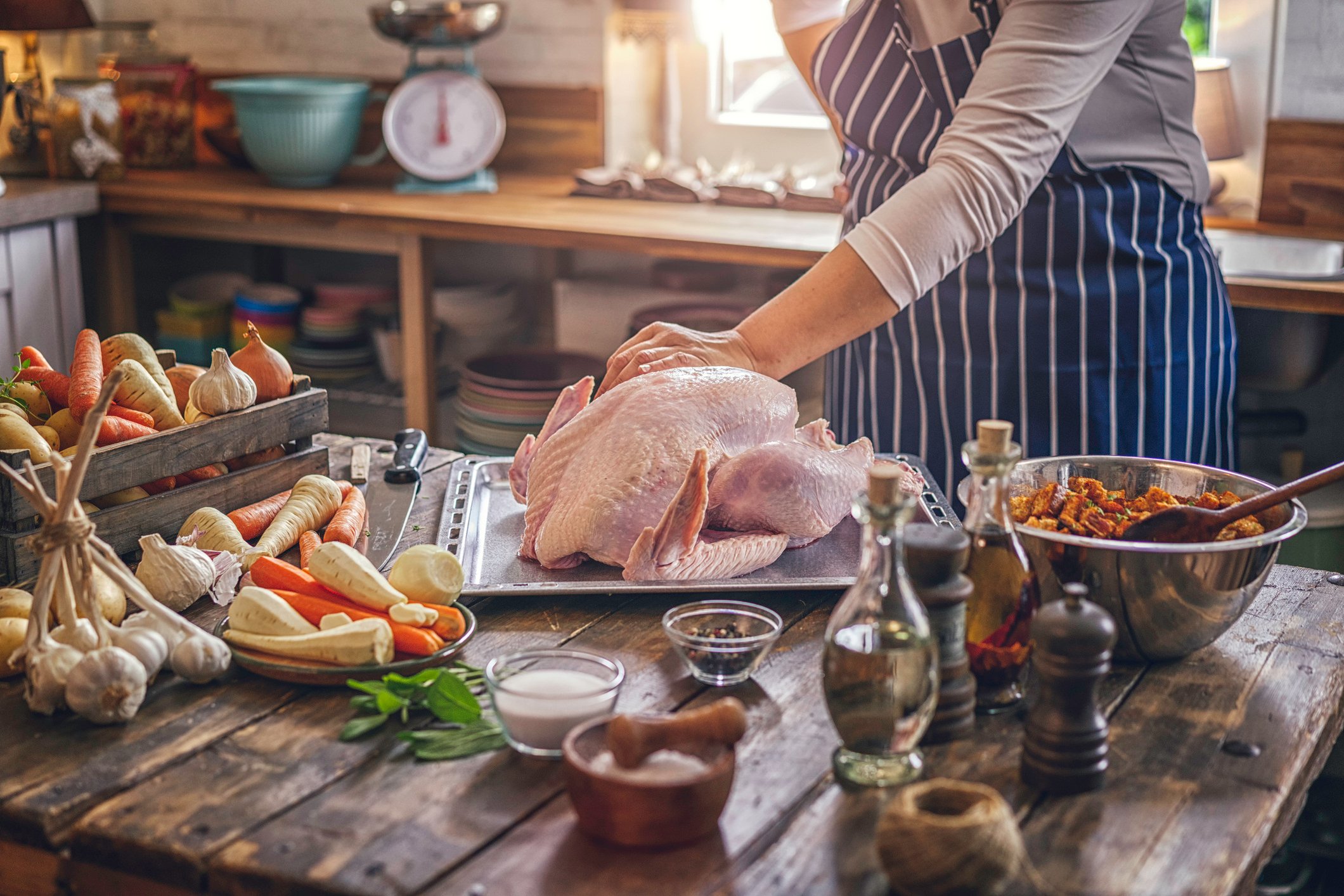Registered dietician, Ricardo Boye, and natural foods chef and Rethink:Rural editor, Kristen Boye share the secrets to cooking healthier and tastier thanksgiving dishes (which will give you more energy to enjoy your company, the big game and shopping all weekend long).
Every year Thanksgiving kicks off the American holiday season. In the south, most of us gather ‘round the table for traditional family favorites like succulent roasted or fried turkey, salty gravy, cornbread stuffing, sweet potato-everything, veggie casseroles and a big spread of pies and desserts.
On this special North American holiday, overindulging in anything and everything is considered our birthright…
...even if it results in the classic all-American thanksgiving-feast-food hangover.
You know what I’m talking about, the bloating, fatigue, headaches, indigestion, heartburn, eater’s remorse, plus the extra 5 or 10 pounds you swear you gained in one sitting that continues compounding until your next new year’s resolution.
It’s a wonder anyone has the energy to stay up for the game...let alone Black Friday all-nighters.
But, what if there was a way to enjoy all your favorites in their succulent, flavorful, traditional glory without having to endure the awful hangover?
There is! And according to Ricardo Boye, Georgia and Texas-based Registered Dietitian and Traditional Naturopath, the key lies in making small ingredient changes to traditional recipes to remove the “hangover factors”.
Want to learn more? Here are 10 easy and practical ways to cook a little healthier this thanksgiving, without sacrificing tradition or flavor.
Tip #1: Opt for a free-range, pasture-raised turkey (or hunt your own)
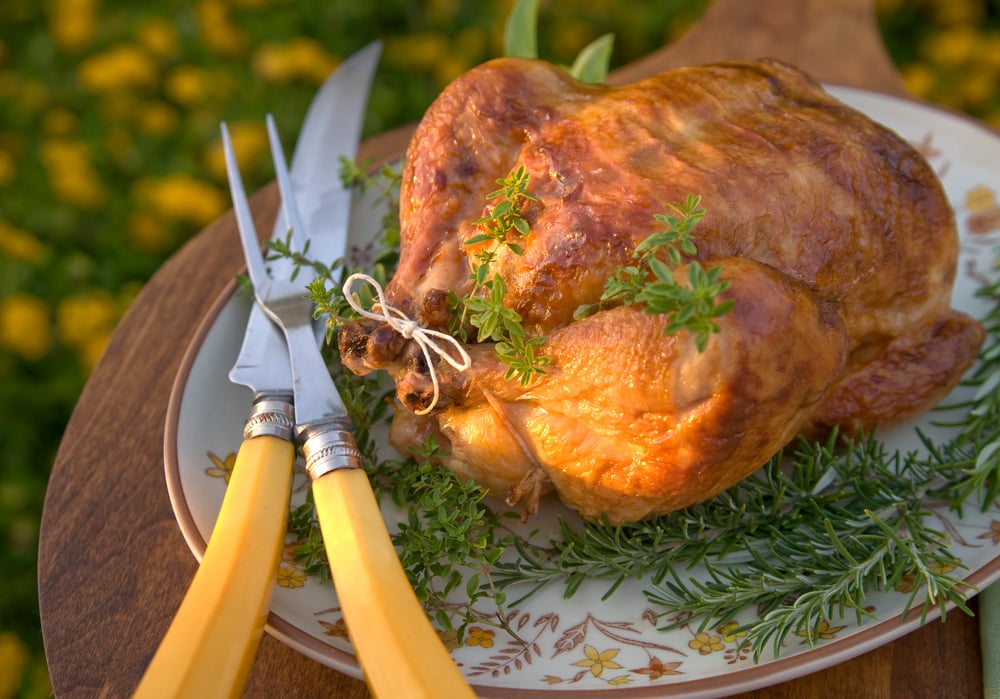
Pasture-raised or grass-fed beef has become trendy for its health benefits; and the same applies to turkeys too. Boye explains:
“One of the biggest benefits of grass-fed meats and wild poultry over factory farmed meats are in the types of fats that they DON’T have. Factory farmed meats are rich in inflammation-promoting omega-6 polyunsaturated fats due to their steady diet of corn and soy, whereas their wild counterparts have far, far less of these harmful fats. These animals tend to be much healthier themselves, and as a result, they are much healthier for you and your family!”
Bottom line: A pasture-raised or wild turkey will not contain pro inflammatory fats, which can help improve digestion and reduce aches and pains the next day.
For more info on the health benefits of wild turkey, check out this infographic: “The Health Benefits of Eating Wild Turkey”.
Tip #2: Skip the MSG
You’ve probably heard MSG can cause reactions in some people. But did you know this common food additive isn’t always labeled “MSG”? In fact, it can legally be listed under dozens of different code names on food labels. Boye explains:
“MSG is a tricky food additive, even though it adds that unmistakable ‘umami’ flavor to foods that is quite savory, it is actually an excitotoxin* that can cause a lot of health problems --- from headaches and dizziness to a variety of digestive symptoms like nausea, diarrhea, and vomiting. Watch for other names commonly used for MSG such as hydrolyzed vegetable protein, textured vegetable protein and yeast extracts which are often found in bouillon cubes, soups, gravy mixes, sauces and in many other prepared foods.”
*Excitotoxins are a class of chemicals or amino acids which are added to processed foods to make them addictive. They work by over-exciting your brain cells, which (believe it or not) leads to neurodegeneration, and eventually, the death of otherwise healthy brain cells.
Bottom line: MSG is bad news for anyone who cares about their brain health. Instead, look for items that do not contain MSG (or its code names).
Tip #3: Balance creamy casseroles with roasted vegetables
Roasting brings out vegetables’ natural sweetness with just a few ingredients...plus it works on any veggie you’d normally “casserole”, and it’s easy to do.
For example, green beans can be roasted to savory perfection with just olive oil, salt and pepper. Or, try a seasonal vegetable roast with pearl onions or leeks, butternut squash, and brussels sprouts.
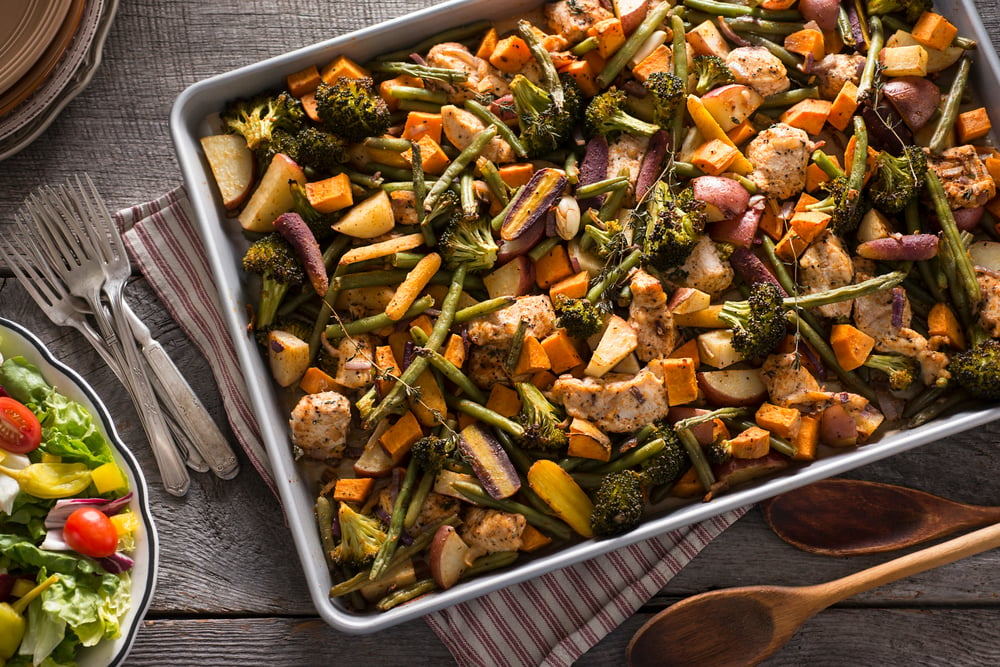
Just remember the golden rules of veggie roasting: start ‘em hot (like 425-450 degrees), add enough olive oil to coat and a generous amount of sea salt.
Finish with fresh sage and your guests will be begging for more!
Bottom line: Roasting vegetables brings out their natural sweetness while helping you cut back on unhealthy fats and calories.
Tip #4: Serve up some homemade pickles for delicious digestive relief
As it turns out, a good old fashioned relish platter can be a healthy addition to your thanksgiving feast. Per Boye:
“Fermented or naturally pickled foods can often make other foods more digestible to the human digestive tract.
“Contrary to popular belief, raw vegetables are actually difficult to digest properly. The mere process of fermenting or culturing them (with a little sea salt, brine and time) makes them easier for your body to break them down and helps you avoid the gas and bloating. Plus, fermented vegetables contain a wealth of naturally-occurring prebiotics and probiotics, and have their own unique zippy taste while adding crunch and texture to your meal.”
Bottom line: Help your guests avoid indigestion by serving up a selection of naturally-fermented pickles.
Note: natural ferments do not contain vinegar and take a few days to develop their “pickly” flavor and health benefits, so plan ahead!
Click here for a quick tutorial and recipes.
Tip #5: Try these all-natural sweeteners for desserts, cranberry sauce and more

Everyone knows sweets are essential to a delicious southern thanksgiving spread. But too much sugar is no one’s best friend, especially those who struggle with blood sugar issues, digestive problems or weight gain.
Luckily, a variety of natural sweeteners are now readily available in most grocery stores and can subbed 1:1 for sugar.
Here’s a quick cheat-sheet on how to use them:
- Cranberry sauce: substitute raw, local honey plus a splash of orange juice.
- Pecan pie, pumpkin pie, pumpkin bread, pumpkin cheesecake, etc: substitute 100% coconut palm sugar for white sugar 1:1, for brown sugar do 1:1 plus 1-2 tablespoons molasses: coconut palm sugar is dehydrated sap from coconut palms. This whole food contains trace minerals like iron, calcium and magnesium plus antioxidants. It also contains the prebiotic fiber inulin, which makes it lower on the glycemic index than table sugar.
- Whipped cream: pure maple syrup with a little vanilla: mixes in fast without noticeable maple flavor. Like coconut sugar, maple syrup is a whole food that contains essential minerals like manganese, iron, and zinc plus antioxidants, and is lower on the glycemic index than table sugar.
- For non-calorie sweeteners, Boye recommends skipping artificial sweeteners (which have been linked to a host of health problems) and opting for stevia products or monk fruit.
Bottom Line: Natural sweeteners are easy to find, easy to use, and taste incredible...why not use them to make your desserts even more unique?
Tip #6: For fried turkey, use a less-processed oil
Fried turkey was born in the South, and is now considered a must-have at Thanksgiving tables across the country.
Here’s what Boye recommends to make it a little healthier:
“One of the biggest culprits in our diet that contributes to a host of health problems are the oils and fats we both eat and cook with.
“Industrial seed oils (such as canola, cottonseed, safflower, peanut, etc.) are truly a health hazard of modern times. Thus, cooking with more natural oils can literally be the most important thing you do in your nutrition to improve your health.
“Roasting is obviously a healthier choice, but if you are going to fry your turkey, choose a natural oil with a high-smoke point like coconut oil or avocado oil instead of common oils used for turkey frying, like peanut oil. You can find deodorized, refined coconut oil that doesn’t taste like coconut to help keep your turkey tasting like turkey, and not some tropical dish.”
Chef’s tip: You can find a deal on these healthier oils by shopping online and/or at your local price club. If you’re using coconut oil, make sure it’s refined coconut oil vs. “virgin” coconut oil, as the virgin has too low a smoke point for frying.
Bottom Line: Roasting your turkey is healthier, period. But, if fried turkey is your tradition at least use avocado or refined coconut oil in your turkey fryer.
Tip #7: Don’t toss those giblets!
Organ meats, like the heart and liver in turkey giblets, contain a wealth of nutrients like B12 and iron which support healthy blood and energy.
Here are 3 ways to use them:
- Use the neck in your turkey stock to add great flavor and extra gelatin.
- Cook the organ meats in the oven with the bird, then mince and add to your gravy.
- Puree cooked giblets and add them to your stuffing or “dressing” (no one will ever know).
Bottom Line: Grandma knew what she was talking about when she said: "Waste not, want not"...especially when it comes to organ meats like those found in giblets.
Tip #8: Try some gluten-free options (you’ll never know the difference)
If you feel heavy and bloated after eating or battle fatigue and brain fog, gluten may be to blame. Says Boye,
“Many people today experience problems with their digestion, from the occasional discomfort to more severe irritable bowel-like symptoms that impact their health in many ways. Recurring bouts of brain fog, headaches, joint pain, fatigue and even stubborn skin problems can be tied back to digestive problems; and at the root of many of these problems lies a sensitivity to gluten --- a protein found in many grains that can irritate your digestive tract.”
If you’re new to gluten-free cooking and baking, Boye suggests trying out a gluten-free cornbread recipe or mix for your dressing.

Bottom line: Cutting back on the gluten can help everyone feel less bloated and lethargic after eating. Starting with cornbread is a safe bet, or you can Google any number of gluten-free gravy recipes, desserts, and more.
Tip #9: Make your own trendy bone broth
Bone broth has become the next-big superfood. So much so that a quart can set you back $6-$12.00 (yikes!).
Health foodies love it for its naturally-occurring gelatin, collagen and glycine which soothe and heal the digestive tract while promoting healthy skin, hair and nails. Everyone else loves it because it tastes amazing as a base for turkey soup, turkey enchilada sauce, gravy, etc.
Fortunately, it’s super easy to make your own with just a turkey carcass, some veggie scraps and a little patience.
How to make your own trendy turkey bone broth:
- Plunk that turkey carcass in a BIG stock pot along with any other remaining turkey parts, like the wings, neck, etc.
- Add some vegetables or vegetable scraps: onions with the skins on or off, celery, carrots and garlic are a must. Avoid adding any “stinky” vegetables like broccoli, Brussels sprouts, etc.
- Add herbs, spices and salt; peppercorns, thyme, parsley stems work great and 1-2 tablespoons of salt.
- Add 1-2 tablespoons apple cider vinegar to draw the calcium out of the bones.
- Let simmer 12-24 hours on low.
- Strain, cool, refrigerate or freeze for later.
Bottom Line: Bone broth is super for your health and your food budget.
Tip #10: If you serve wine, why not go organic?

Most consumers are unaware that many conventional wines can contain a variety of undisclosed additives, including dyes, sugars and preservatives...which can cause wine drinkers some real headaches.
One way to remedy this is to serve organic wines. They’re often comparable in price to conventional wines and do not contain questionable additives like headache-producing sulfates.
You can find organic wines at your local grocery store (Bonterra is a great brand that runs about $12 a bottle) or through online wine clubs.
Bottom Line: If wine gives you a headache or makes you feel lousy the next day, it could be the additives. Organic wines taste great and are now affordable and readily available for your thanksgiving feast.
Happy, healthy feasting America!


